Homeschool Nature Group: How to Start One You’ll Love
Have you wondered how to find homeschool groups in your area? Have you been craving a community of like-minded families to explore nature with? Maybe you have searched for nature co-ops, but didn’t find just what you wanted. Or perhaps you see pictures of Wild + Free groups meeting up on Instagram but don’t know how to get connected with them.
I want to share with you a little bit of my family’s story and give you some ideas of how to simply start one for yourself!
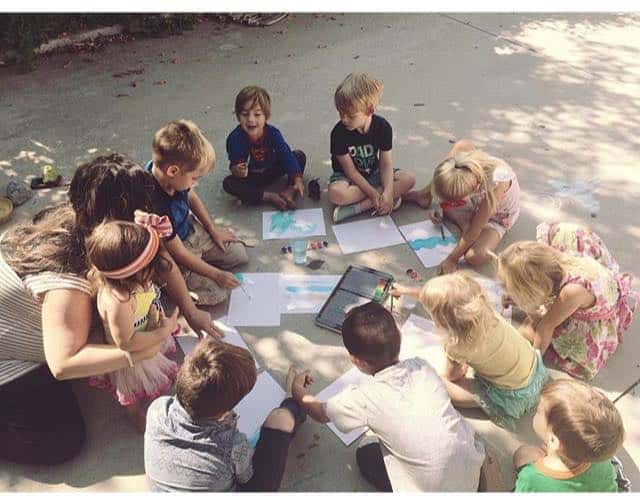
When we first started homeschooling in 2016 I was very fortunate to get connected with a sweet little preschool group. It was based on Five in a Row, which is a literature-based unit study curriculum. We all have very fond memories from those years.
My friend who started it was implementing many Charlotte Mason-inspired riches alongside our days together. We sang hymns and folksongs, read poetry, and did other enrichments. This was the starting point of our journey into the world of Charlotte Mason and then, in turn, the Wild + Free movement.
We now have been involved in multiple different co-ops and nature groups. I have a very high value for community within homeschooling and would love to help others find their people. And sometimes this means creating the very thing you are looking for.
Where to Find Established Homeschool Communities
Wild + Free has a group map section where you can look for an established group. You need to become a member to access the Groups Map but there is a free version. In the paid membership you receive the Wild and Free content bundles. Their content bundles are beautiful and full of inspiration.
If you follow the Charlotte Mason Philosophy, there is a site called Charlotte Mason in Community where you can search your area to see if something already exists.
If nothing is listed on those sites, oftentimes you can reach out on Facebook. You can post in your town or cities connection groups to see if there are homeschooling groups/ families in the area. Perhaps your church has a group page that you could ask or connect with members through there as well.
Be specific about what you are looking for. Are you wanting some families to go hiking with you? Or maybe just a nature walk through a local park. Are you wanting to nature study or just be in nature with friends? What ages are you hoping to have involved? Do you have specific days of the week or month that work best for you? Take some time to really think these things through so you can potentially find “great fits.”
“It is infinitely well worth the mother’s while to take some pains every day to secure, in the first place, that her children spend hours daily amongst rural and natural objects; and in the second place, to infuse into them, or rather to cherish in them, the love of investigation…” Charlotte Mason
How to Create a Homeschool Nature Group
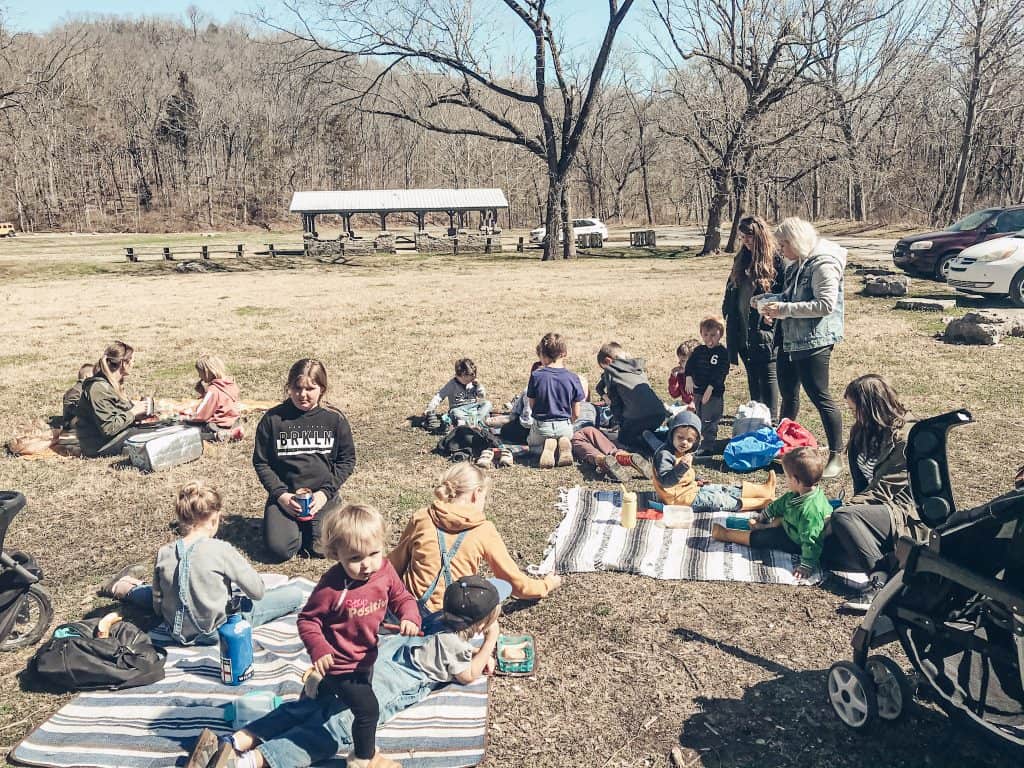
First: What is the best size for a Homeschool Nature Group:
First off let’s think about How large of a group are you willing to take on? Homeschooling families can add up quickly. Previously, I have been a part of a very large group, which was fun but sometimes the size limited the places we could go. On the other hand, having a smaller group of 5-6 families can mean sometimes only a few families show up due to sickness or holiday schedules. These are some things to keep in mind.
For our first year in a new state, my group has been invite-only to keep the group size small. When I feel ready to open it up to more families I will be aiming for 10-12, as I think that helps keep the group full but not too large.
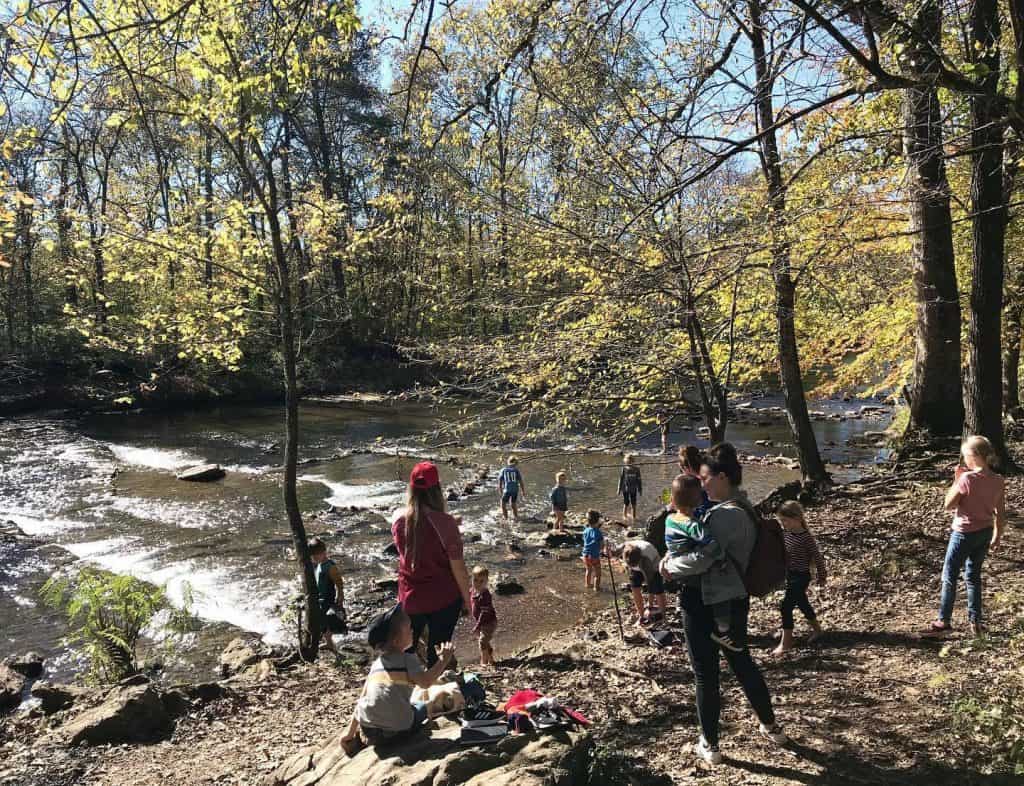
Second: Location and where to meet:
Next, consider where you will be meeting. Some groups like to meet at a different location each meeting while others like to stay in a consistent spot. There are advantages and disadvantages to both, which I will break down a bit.
New location every time:
Pros: You get a wide variety of locations to explore. Always a new adventure to help curb boredom. This is a fun option for people who know the area really well and want to spread their wings a bit.
Cons: Some people can get lost or have a hard time finding a new place each time. (When I was a part of a large group that did this, the leader had to scout the location the day beforehand to help clarify the meeting location and check for any issues like fallen trees or flooded land.) Give really detailed descriptions of where you are meeting and some extra time to account for everyone arriving.
Compromise: If the idea of the same location seems dull to you, maybe find a few locations and rotate them. That way you get variety but also some familiarity.
When planning a location I think it is important not to have a playground nearby. This helps children focus on the nature around them without the adults redirecting their attention constantly.
If you are very new to the idea of getting out in nature and don’t know of many locations, don’t fear! Children can actually benefit from staying in the same location year-round and see how the seasons change in one place. As they gain familiarity with their surroundings, it will cause them to look deeper. It is never a bad thing to really know one place well.
One Last Thing to Think About for Location
Distance! How far away from your home are you willing to travel? If your group meets only once a month, maybe you can push out travel time to an hour. But if you are thinking of meeting more frequently, it may be best (if locations allow) to stick within 30 minutes or so from where the majority of your group lives.
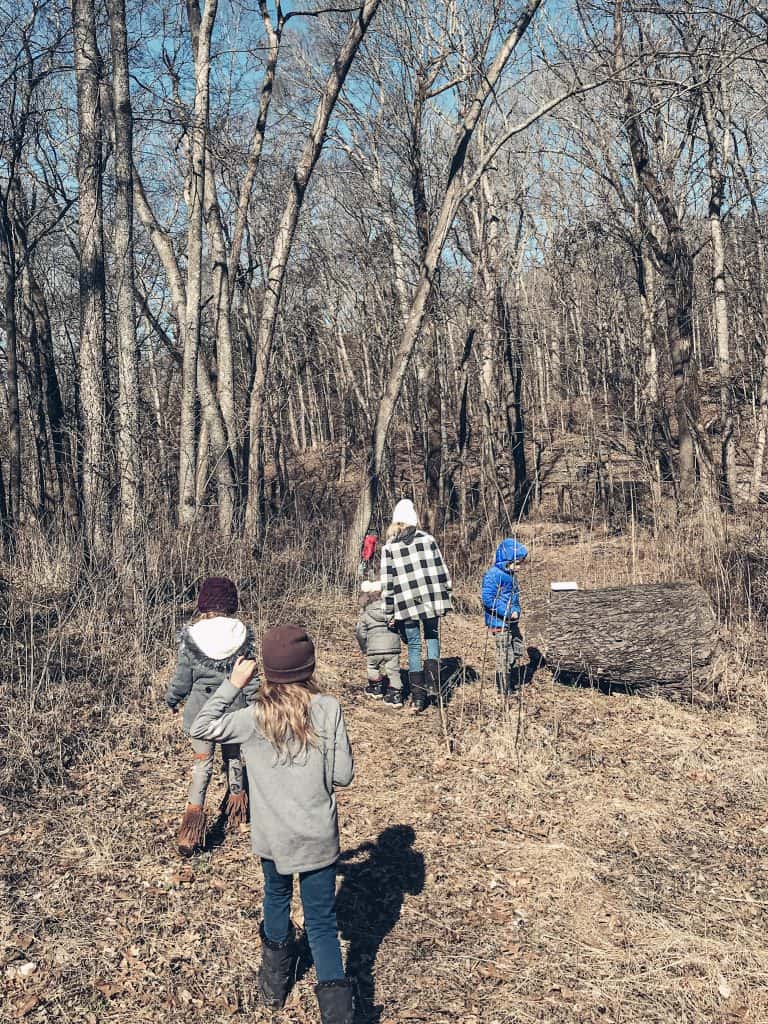
Third: How Often Will Your Group Meet?
One of the best things about making your own nature group is that you get to pick the frequency and location that works best for you and your homeschooling family. Do you want to meet weekly, bi-weekly or monthly? You get to chose what serves your family best and invite others into that.
Personally, weekly is too often for me. It doesn’t leave much room for other events or much margin in our school schedule. Our current nature group meets twice a month and I think it is a great fit for our family. As a result, it also leaves some space in the calendar if we need to reschedule due to weather or other issues.
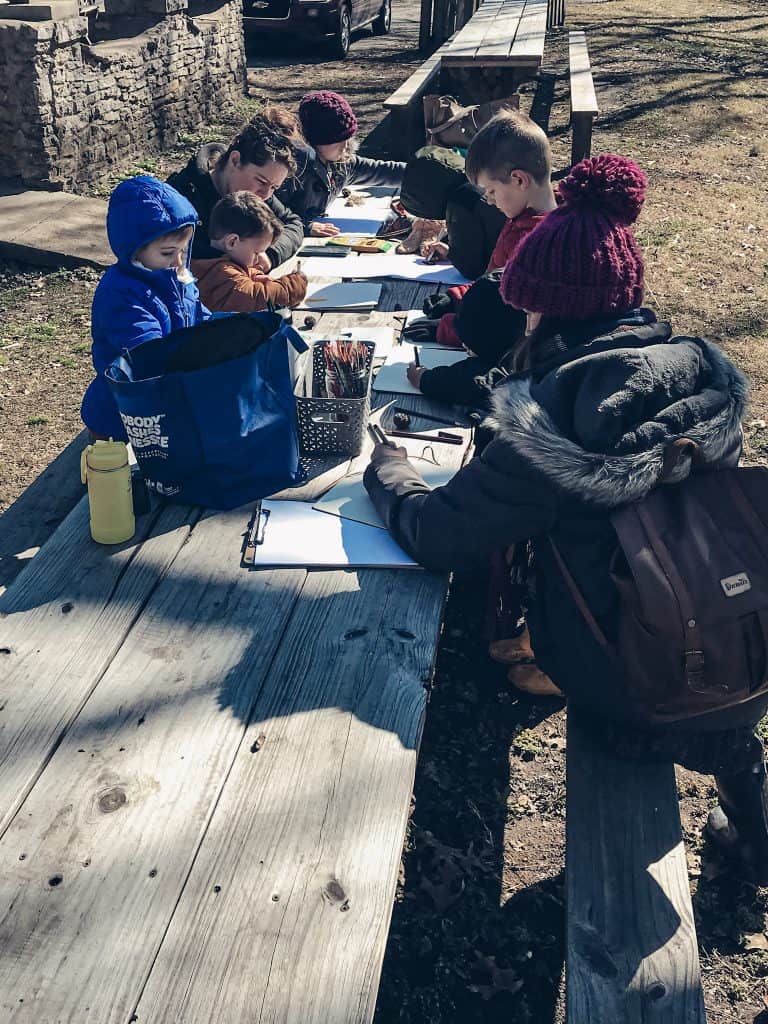
Fourth: Weather Considerations:
Depending on where you live, you may not be able to plan on meeting all year long. Although the book title, There is No Such Thing as Bad Weather gets quoted in the outdoor community often, not every homeschooling family wants to brave all seasons.
Especially if they have young children or are newer to be outdoors a lot, it can be too much to expect them to show up all year long. Perhaps they don’t have the necessary weather gear to safely be in very cold temperatures.
Considerations can be made if possible, such as moving the meeting time to later in the day so it is warmer. Or if you live in a very hot state, you may need to meet earlier in the day before the heat gets too unbearable. This is the beauty of nature. There is variety, and it doesn’t stay static all year long. This may be the first lesson for the group as a whole.
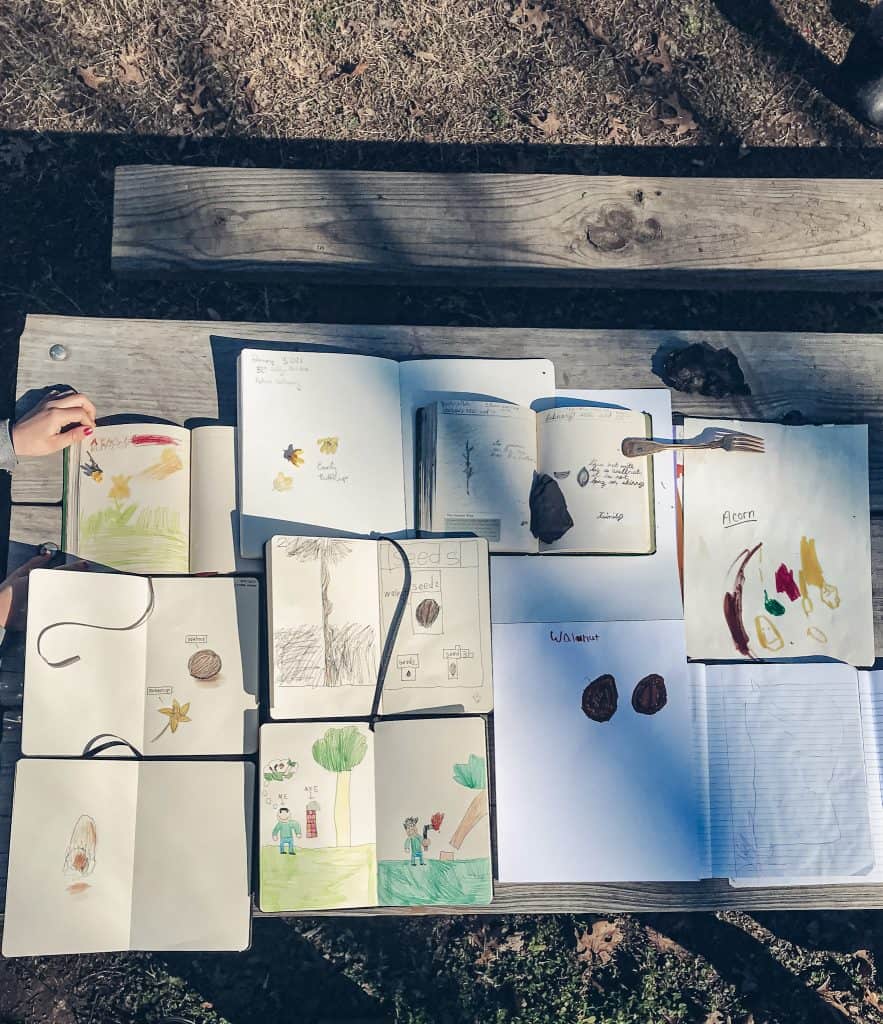
Fifth: What Will You Do During Your Homeschool Nature Group?
Now that you have the how, who, where, and when figured out, let’s talk about what you will actually be doing together. Think back to earlier when I asked if you wanted to hike or just go for walks. What is the vision you have in mind when you think of a nature group? Do you imagine an actual lesson being taught or free-roaming in God’s natural world?
For me, I love a gathering with friends, and let us encourage each other in our Charlotte Mason studies. It goes back to the first couple of groups we were a part of and doing enrichments together. We gather to sing hymns and folksongs. As well as have time for the children to share anything they have read, made, or want to tell the group. Then we explore the area, find something we want to nature journal, and gather back at “base” to nature study in our journals. We alternate between nature study and doing a nature-based game from the book Play The Forest School Way to have a nice variety of activities.
My group follows Ambleside Online’s hymn and folksong rotation. My friend Hannah has a Youtube channel called FolksandHymns where she posts the AO songs. Her arrangements are not too overproduced so it makes it easy to sing along with.
Our Homeschool Nature Group Schedule
10:30 Gather together for opening prayer and instructions. Sing a hymn, folk song and have sharing time.
11:00 Picnic lunchtime.
11:30 Nature study/ nature game/ craft alternating between weeks.
12:30 Closing prayer and goodbyes, clean up
A True Homeschool Nature Co Op
A co-op is when every parent has a part that they contribute to the overall group. So this will look different with each group and depend on what your plan is. Even though I lead most of the actives in our nature group, I still consider it a co-op because I need the mamas to be involved. Mamas are the ones to watch their children, guide them along in the schedule, and be an example of what nature exploration looks like. I ask that they be involved and not go off on the sidelines just talking amongst themselves, they need to be alert so we have enough eyes on all the children.
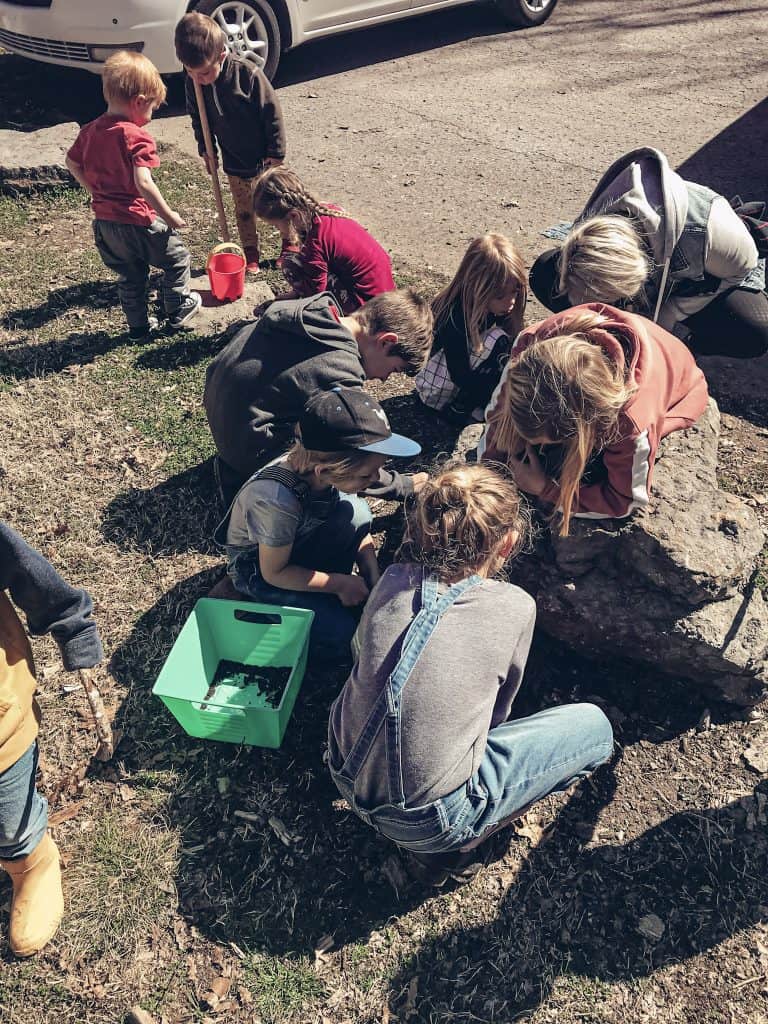
Lastly: How will Your Homeschool Nature Group Communicate
These days many people are trying to limit their time on Facebook, but gosh darn it, it makes things so easy. Our nature group is small enough we have a text message thread but you may end up looking for an app that can help facilitate groups too. I have heard of Time Tree which is a shared calendar. Also, GroupMe or Telegram may be options. The only problem is trying to get everyone on to a new system can be tricky, but if all else fails there is email.
This may sound like a lot to think of but I hope it is broken up enough to make it simpler for you and that you don’t have to “reinvent the wheel” here. It really is worth it to connect with like-minded people so we can learn together.
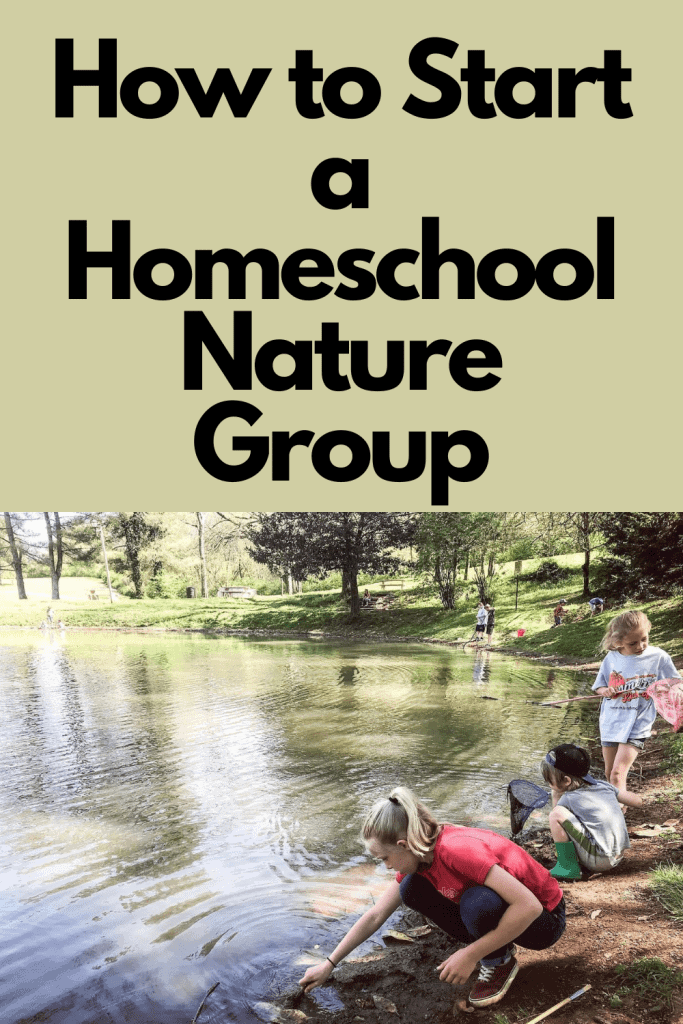
Closing Thoughts:
A few things I would like to mention in closing is that being out in nature is wonderful mentally, emotionally, and physically. There are many resources on this subject and I will link a few of my favorites below.
But I would encourage you to set up some guidelines BEFORE your first gathering to make some expectations clear. Nature is to be respected.
It is important to take care of the natural world by not breaking/ destroying or removing limbs of trees, shrubs, moving nests, or hurting animals, etc. Care should be taken when harvesting samples of specimens for study and always follow park guidelines.
Nature Study Resources
John Muir Laws is a wonderful resource for learning how to do AND teach nature study. He has a free option of his Nature Journaling Curriculum.
Exploring Nature with Children by Raising Little Shoots has weekly plans as well as extension activities all laid out in an easy format.
Last Child in the Woods by Richard Louv is a great book about the importance of being in the great outdoors.
Adventuring Together by Greta Eskridge is a real-life mama sharing why adventuring has been a central bonding experience in their family.
Here is a peek inside our nature study bag. Links to our favorite things are here.
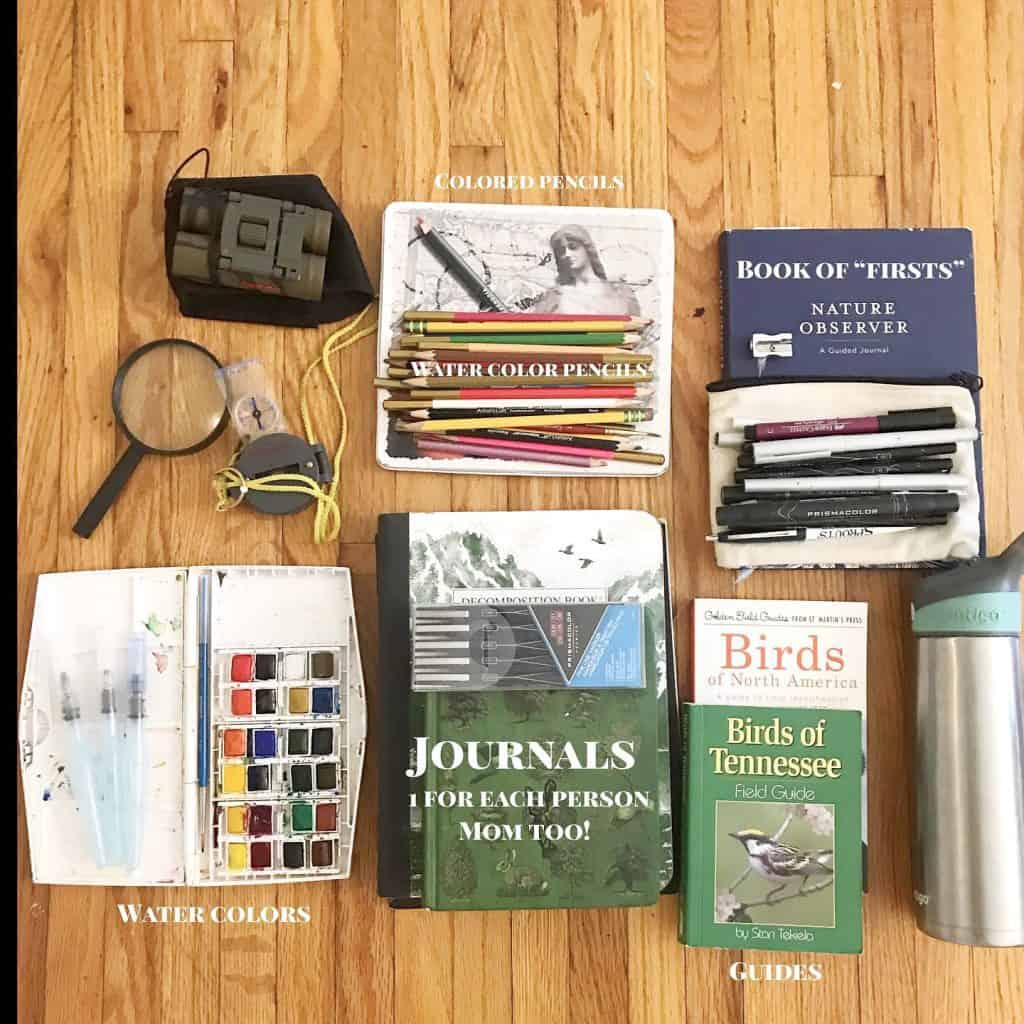
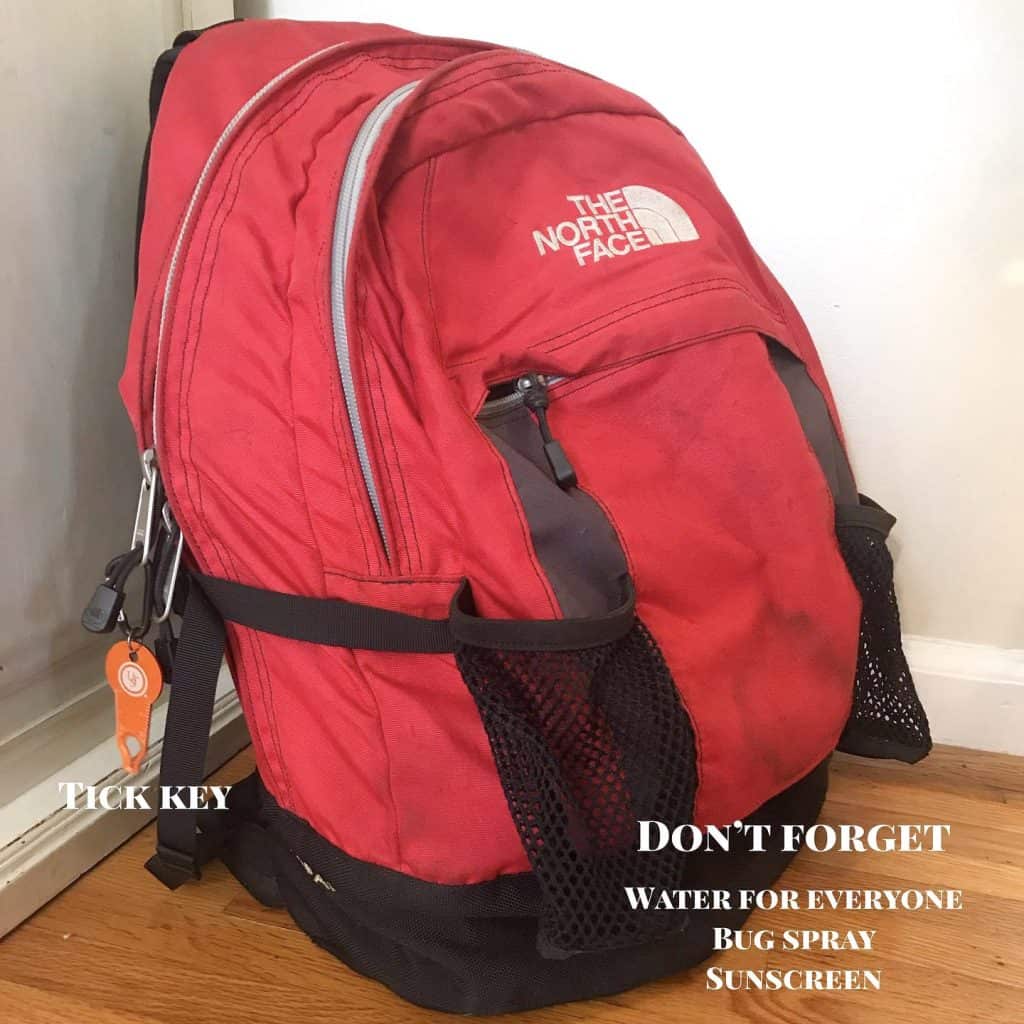
I hope this is helpful to you and that you are able to have a thriving homeschool nature group community rise around you. Feel free to comment if you have other questions I may have missed. Now get to it! Let’s build some awesome homeschool nature friends!
If you’d like to read more about how we homeschool, you can read more here:
How to Schedule Ambleside Online: How to Make it Work
How to Homeschool Multiple Ages: with 10 Tips
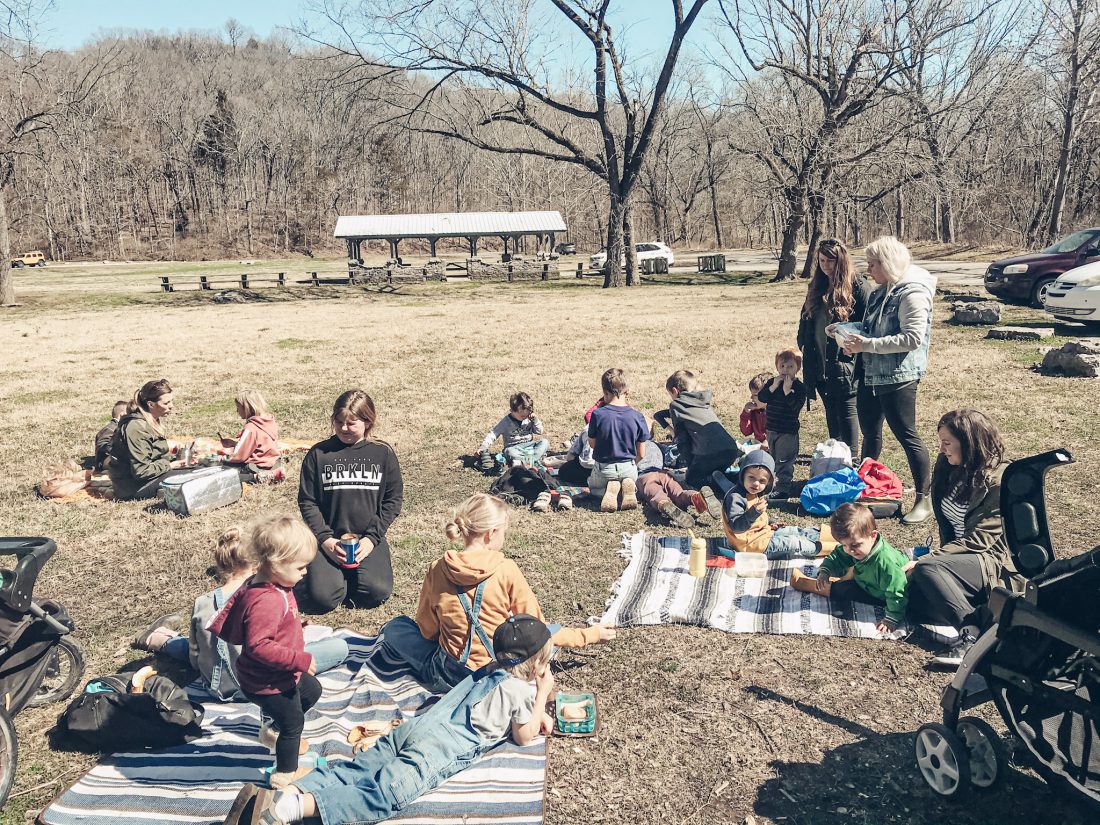
Such a wonderful learning experience for the children. You can’t beat learning in nature with peers!
It has been a highlight for all of us!
This is such an excellent post! Very informative. My kids and I are just getting started with nature study (nature walks, nature journaling, etc.). I bought Exploring Nature with Children as well. It would be so neat to do it with a group! Glad you have that. And I agree, I think weekly would be a bit too much for us too. Oh and The John Muir Laws and Last Child in the Woods are on my “to read” list. I heard about Last Child in the Woods from the Delectable Education’s Parents Educational Course. The books I have read on there so far are fabulous. Thanks for sharing all this!
You are speaking my language! All those resources and books are great ones! So glad you enjoyed the post. 🙂